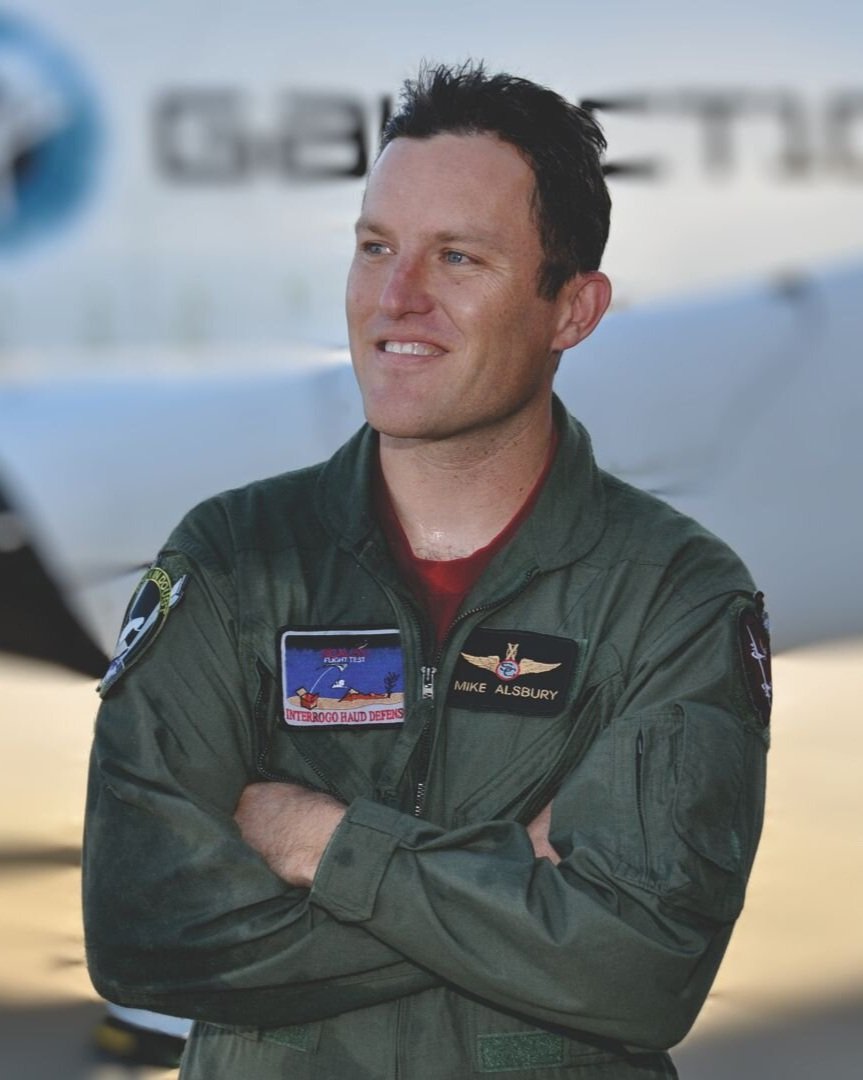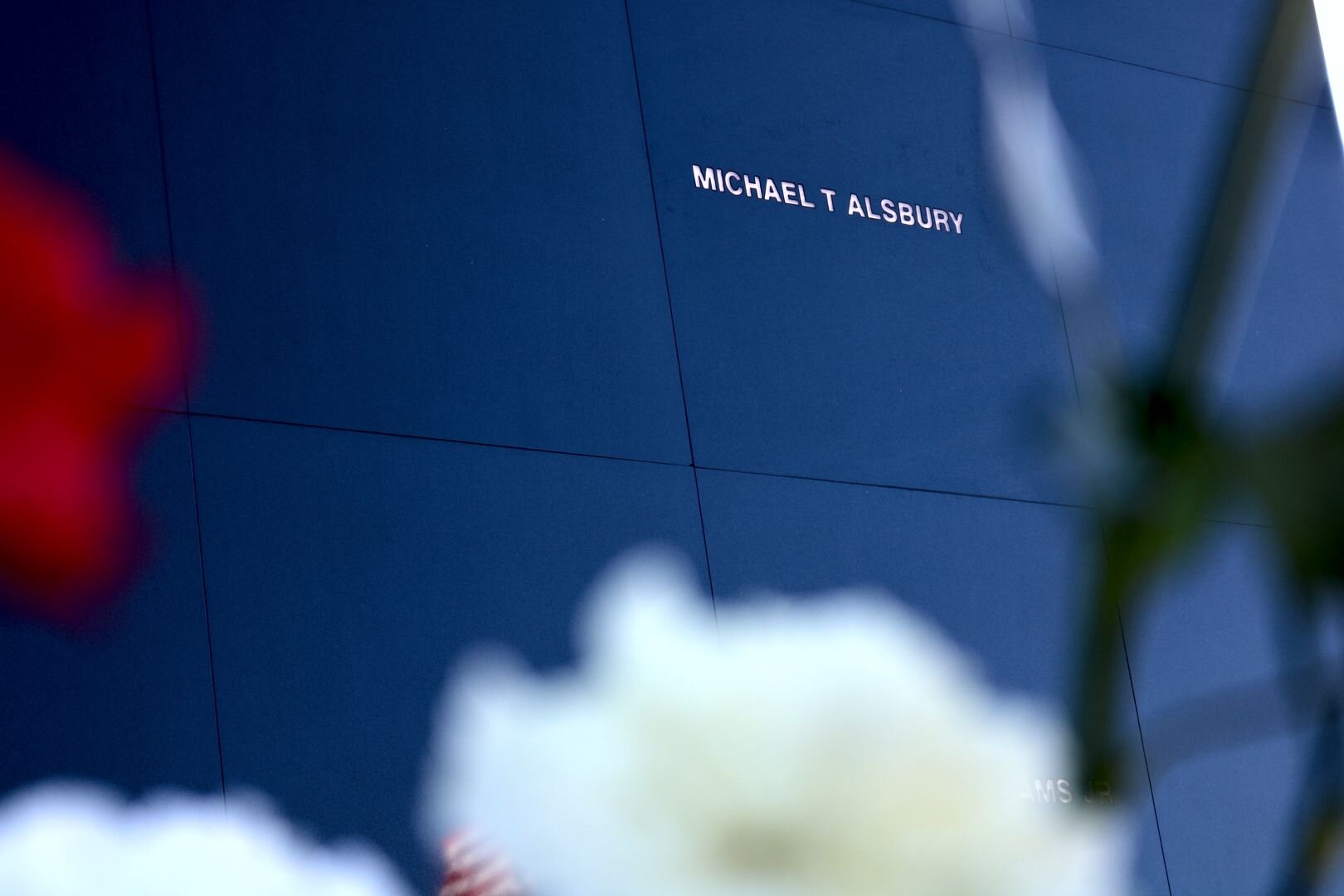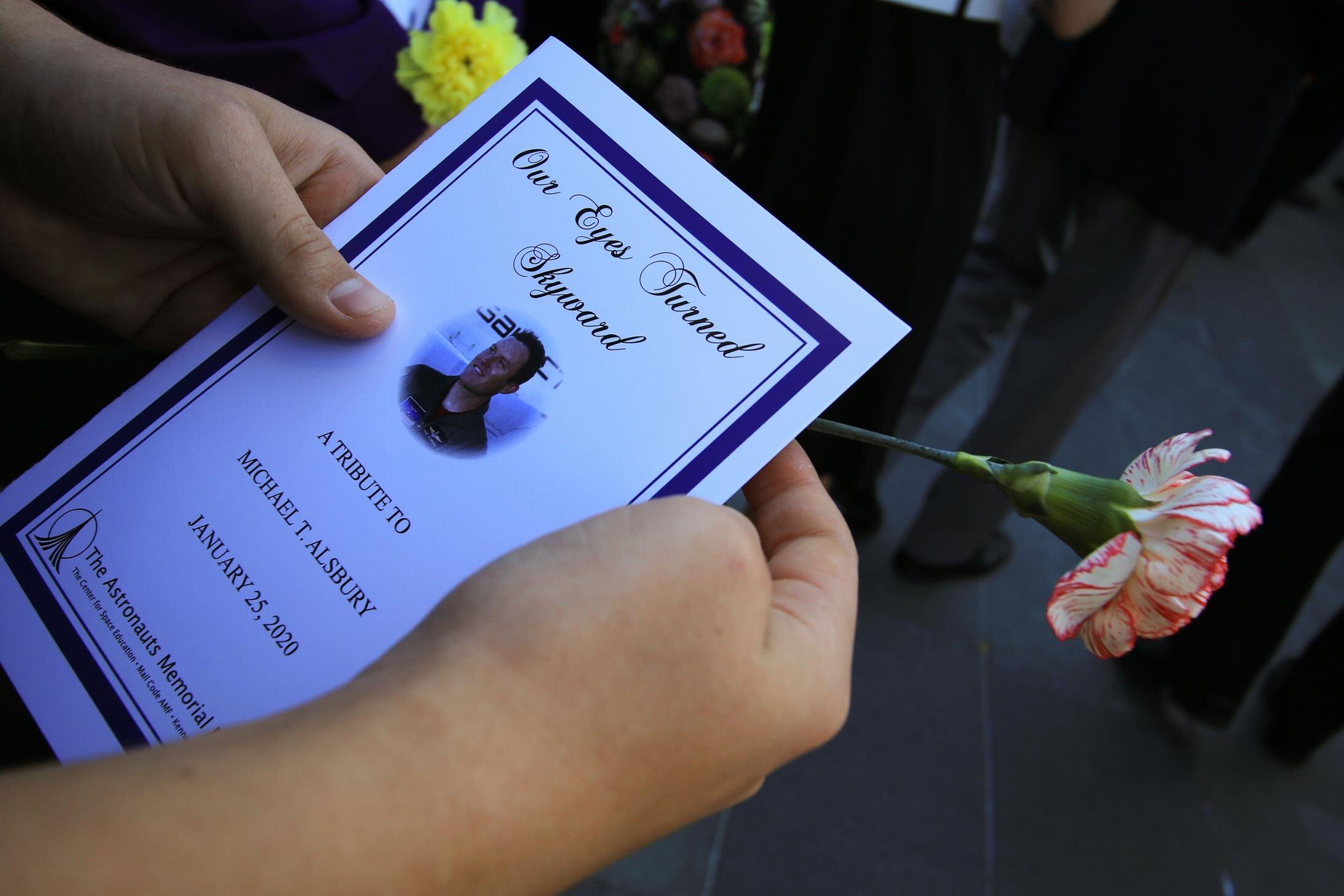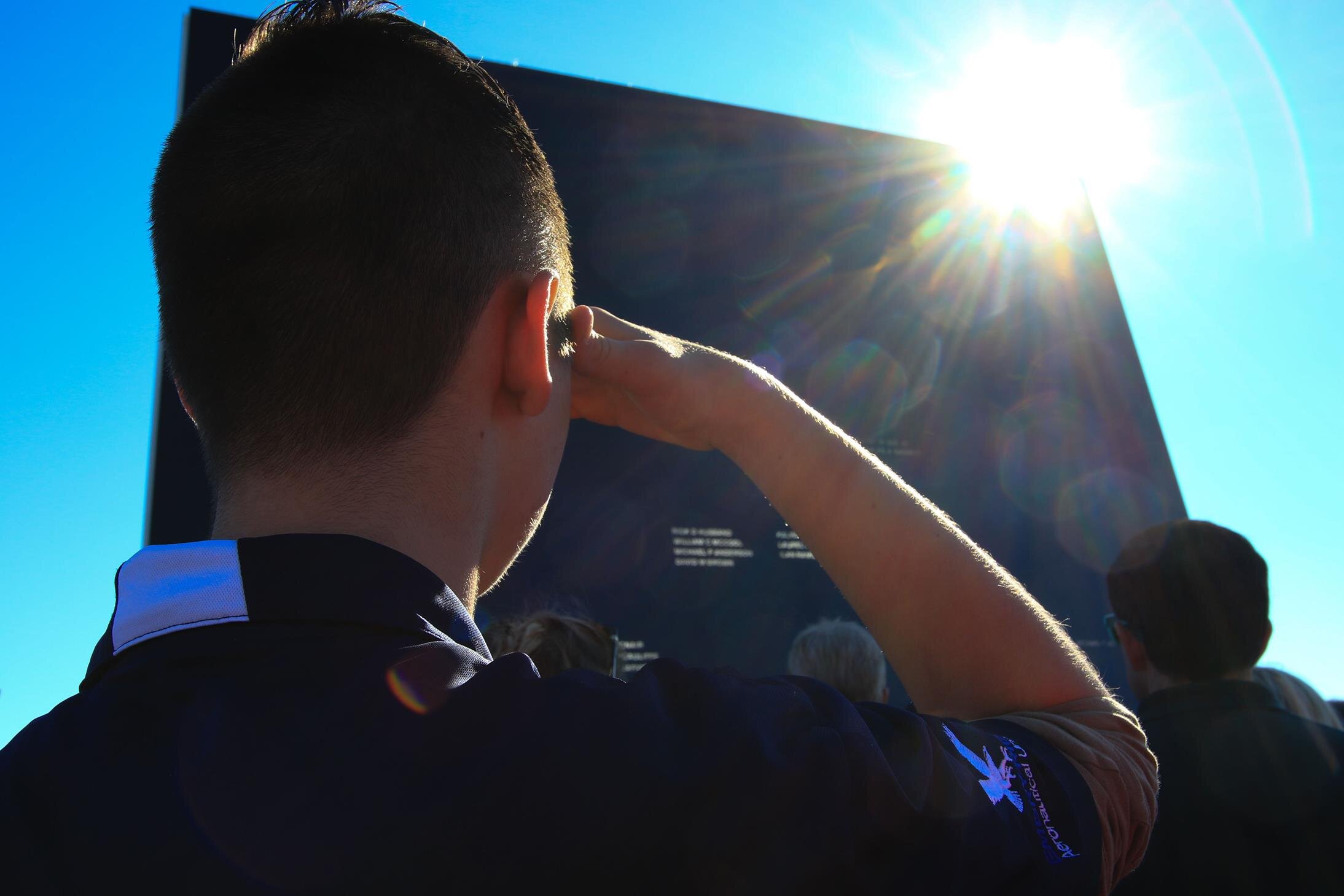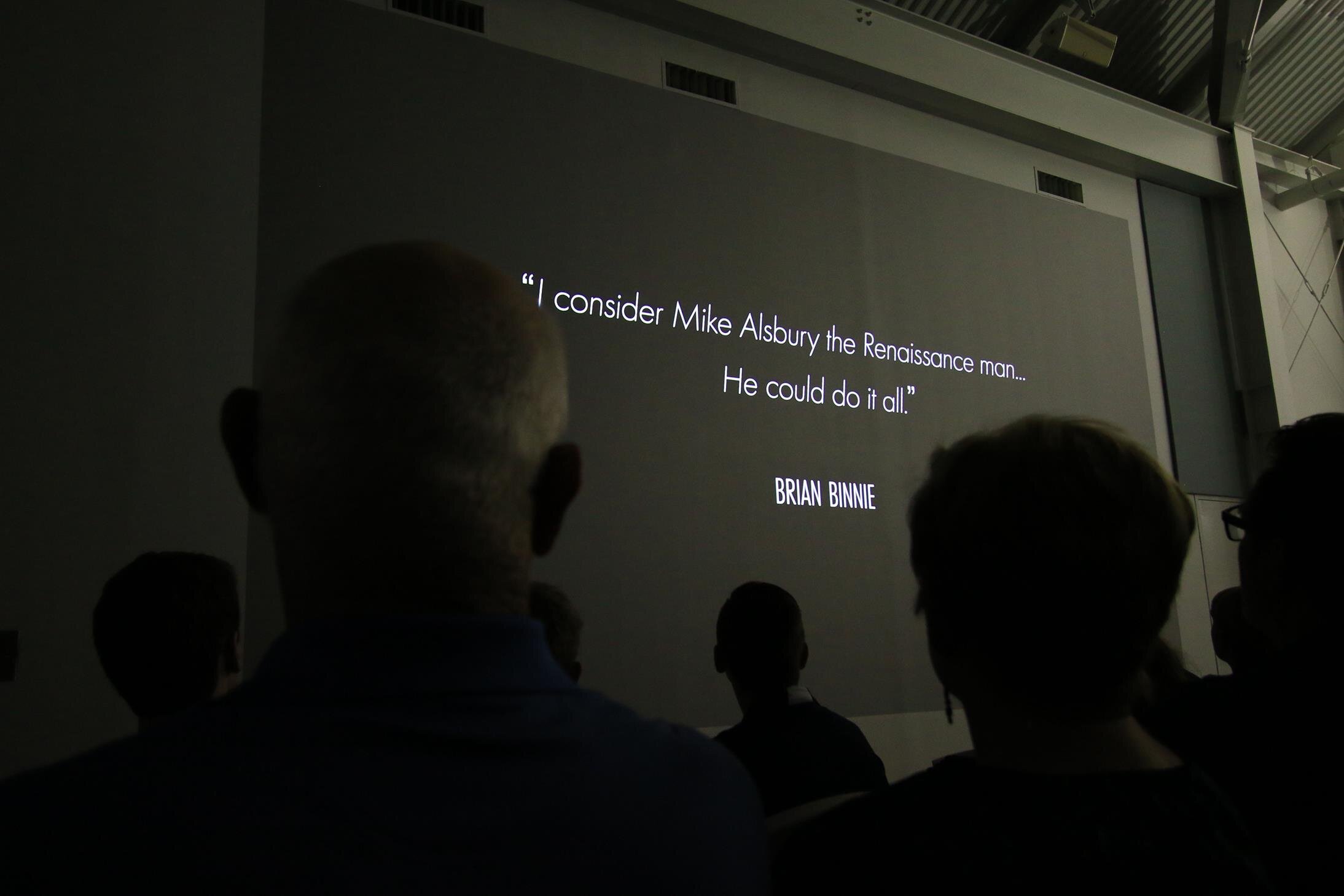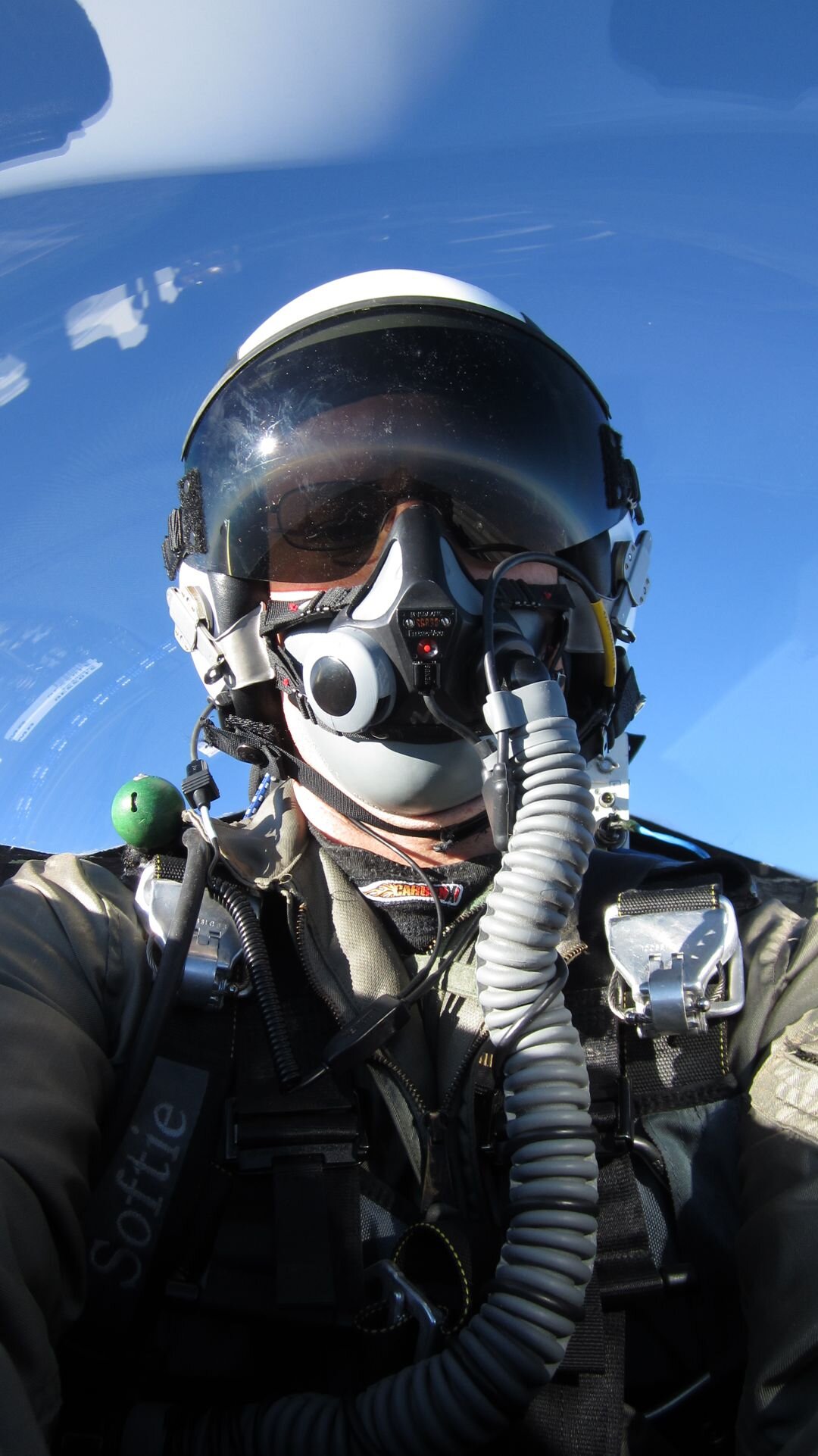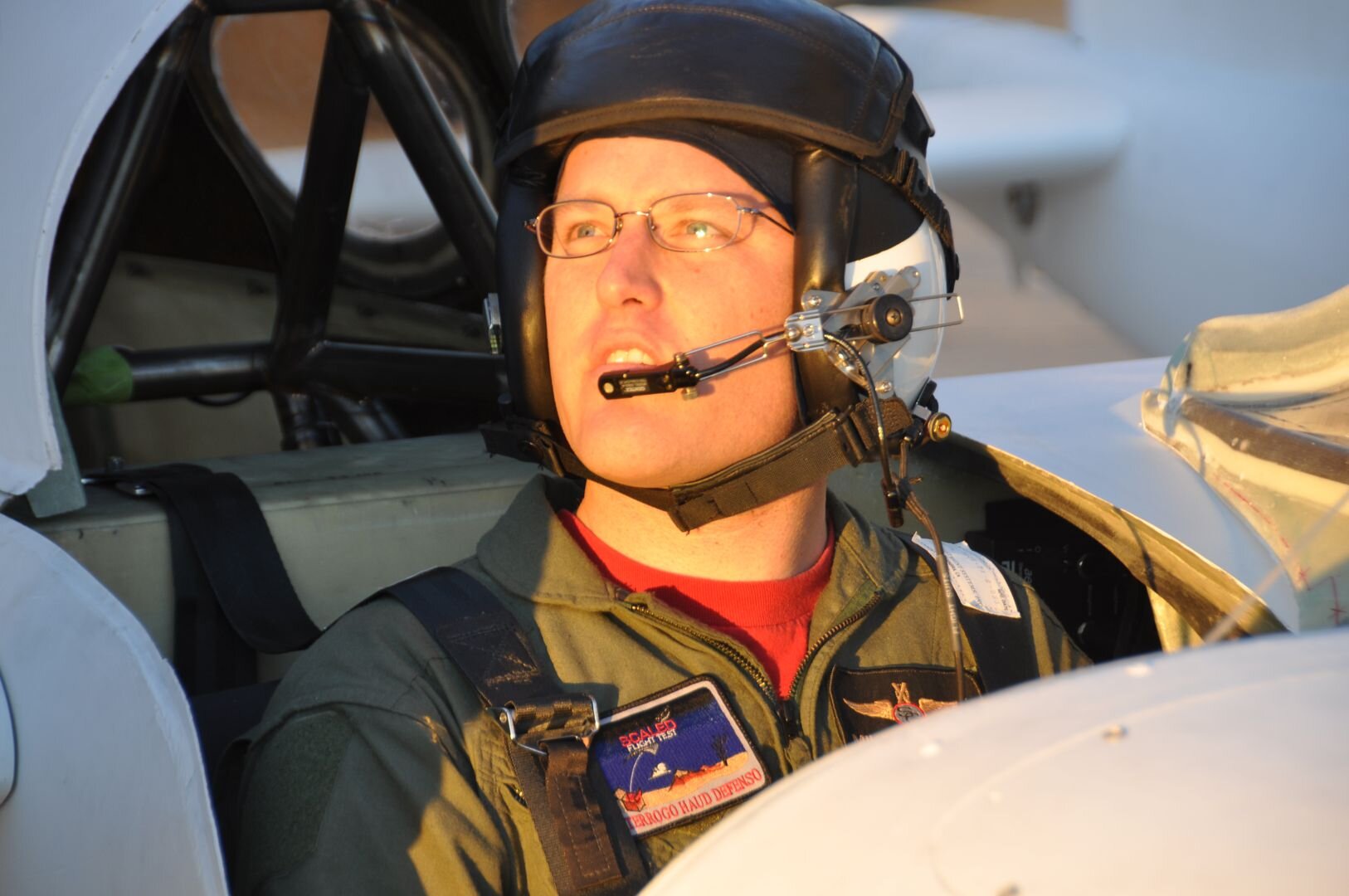Michael T Alsbury
MARCH 19, 1975 - October 31, 2014
Born March 19, 1975, in Scotts Valley, California. Michael T. Alsbury received a Bachelor of Science degree in aeronautical engineering from California Polytechnic State University in San Luis Obispo.
Mike and his wife, Michelle, have two children, Ainsley and Liam. Mike worked as an engineer and test pilot for many experimental aircraft configurations including the Proteus high-altitude aircraft, the White Knight carrier aircraft, the ARES low cost battlefield attack aircraft demonstrator, the Old School optionally piloted prototype, and the WhiteKnightTwo carrier aircraft. Mike also supported testing and development of the SpaceShipOne spacecraft. He was a member of the Society of Experimental Test Pilots (SETP), and in 2013 won the Tenhoff Award for most outstanding technical paper presented at the annual SETP symposium. In 2014, Mike was on the team that was awarded the Northrop Grumman Aerospace Systems President’s Award for exceptional performance and achievement in innovation. He logged more than 2,000 hours as pilot in command during his 16 years of flight experience.
Mike was the copilot of the SpaceShipTwo Enterprise, which was engaged in developmental flight tests of a nylon/nitrous-oxide hybrid rocket motor system. This flight was to be a final stepping stone in the SpaceShipTwo experimental development program prior to commercial spaceflight operations.
On October 31, 2014, at 39 years of age, Michael T. Alsbury made the ultimate sacrifice and lost his life in pursuit of making real the dream of space-travel for all humankind.
ABOUT SPACESHIP TWO
The SpaceShipTwo project is based in part on technology developed for the first-generation SpaceShipOne, which was part of the Scaled Composites Tier One program, funded by Paul Allen. The Spaceship Company licenses this technology from Mojave Aerospace Ventures, a joint venture of Paul Allen and Burt Rutan, the designer of the predecessor technology.
SpaceShipTwo is a low-aspect-ratio passenger spaceplane. Its capacity will be eight people — six passengers and two pilots. The apogee of the new craft was designed to be approximately 110 km (68 mi) in the lower thermosphere, 10 km (6.2 mi) higher than the Kármán line but as of July 2021, the maximum height reached was 89.9 km. The predecessor craft, SpaceShipOne's target was also 100 km but the last flight reached an altitude of 112 km (70 mi). SpaceShipTwo was designed to reach 4,200 km/h (2,600 mph), using a single hybrid rocket engine — the RocketMotorTwo. It launches from its mother ship, White Knight Two, at an altitude of 15,000 m (49,000 ft), and reaches supersonic speed within 8 seconds. After 70 seconds, the rocket engine cuts out and the spacecraft will coast to its peak altitude. SpaceShipTwo's crew cabin is 3.7 m (12 ft) long and 2.3 m (7 ft 7 in) in diameter. The wing span is 8.2 m (27 ft), the length is 18 m (59 ft) and the tail height is 4.6 m (15 ft).
SpaceShipTwo uses a feathered reentry system, feasible due to the low speed of reentry. In contrast, orbital spacecraft re-enter at orbital speeds, close to 25,000 km/h (16,000 mph), using heat shields. SpaceShipTwo is furthermore designed to re-enter the atmosphere at any angle. It will decelerate through the atmosphere, switching to a gliding position at an altitude of 24 km (15 mi), and will take 25 minutes to glide back to the spaceport.
SpaceShipTwo and White Knight Two are, respectively, roughly twice the size of the first-generation SpaceShipOne and mothership White Knight, which won the Ansari X Prize in 2004. SpaceShipTwo has 43 and 33 cm (17 and 13 in)-diameter windows for the passengers' viewing pleasure, and all seats will recline back during landing to decrease the discomfort of G-forces. In 2008, Burt Rutan remarked on the safety of the vehicle.


